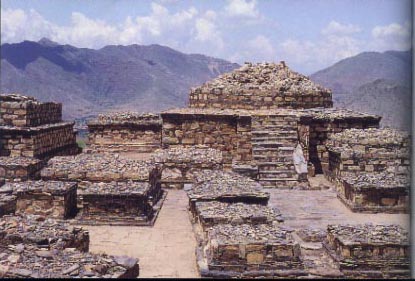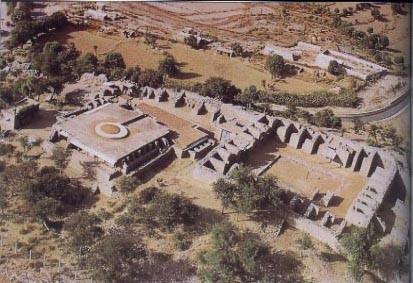Friday, February 12, 2010
Gandhara Stone Hides Many Tales
Source Outlookindia Article
High above the Indus, spread across Punjab and the North Western Frontier Province in Pakistan, on hills known as the Salt Range and areas adjoining it, lie a treasure trove of forts and temples dating from the 6th to 11th century. They include at least 10 important archaeological sites: Bilot, Kafirkot, Kalar, Katas, Malot, Mari, Murti, Nandana, Amb and Patan-Munara.
"Largely ignored by scholars in this century, and orphaned from the mainstream of architectural scholarship since Partition... these remains form an important link in the history of South Asian architecture," writes Prof Michael W. Meister, a specialist in the art of India and Pakistan, in a piece, Temples Along the Indus.
After the decline of Buddhism in Gandhara and adjoining regions, Hinduism spread in the region under the Hindu Shahi kings. They were Shaivites who developed a distinct architectural style, a synthesis of Indian and Gandharan traditions. They were also influenced by Kashmiri temple architecture, which they had been exposed to through marriage alliances with kingdoms in Kashmir.
Katas, which also has structures from other periods, including a haveli of Hari Singh Nalwa, the most feared of Ranjit Singh's generals, remained an important pilgrimage centre until Partition. Most of the other sites were abandoned by the 11th century, when the Shahi rulers took refuge in Kashmir.
High above the Indus, spread across Punjab and the North Western Frontier Province in Pakistan, on hills known as the Salt Range and areas adjoining it, lie a treasure trove of forts and temples dating from the 6th to 11th century. They include at least 10 important archaeological sites: Bilot, Kafirkot, Kalar, Katas, Malot, Mari, Murti, Nandana, Amb and Patan-Munara.
"Largely ignored by scholars in this century, and orphaned from the mainstream of architectural scholarship since Partition... these remains form an important link in the history of South Asian architecture," writes Prof Michael W. Meister, a specialist in the art of India and Pakistan, in a piece, Temples Along the Indus.
After the decline of Buddhism in Gandhara and adjoining regions, Hinduism spread in the region under the Hindu Shahi kings. They were Shaivites who developed a distinct architectural style, a synthesis of Indian and Gandharan traditions. They were also influenced by Kashmiri temple architecture, which they had been exposed to through marriage alliances with kingdoms in Kashmir.
Katas, which also has structures from other periods, including a haveli of Hari Singh Nalwa, the most feared of Ranjit Singh's generals, remained an important pilgrimage centre until Partition. Most of the other sites were abandoned by the 11th century, when the Shahi rulers took refuge in Kashmir.
Subscribe to:
Post Comments (Atom)














No comments:
Post a Comment